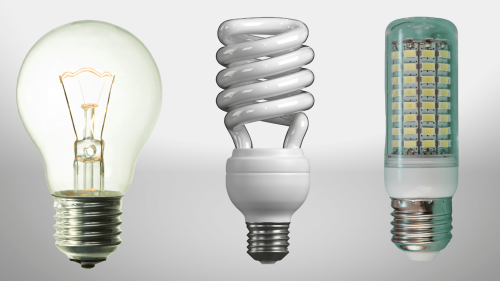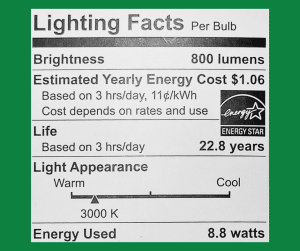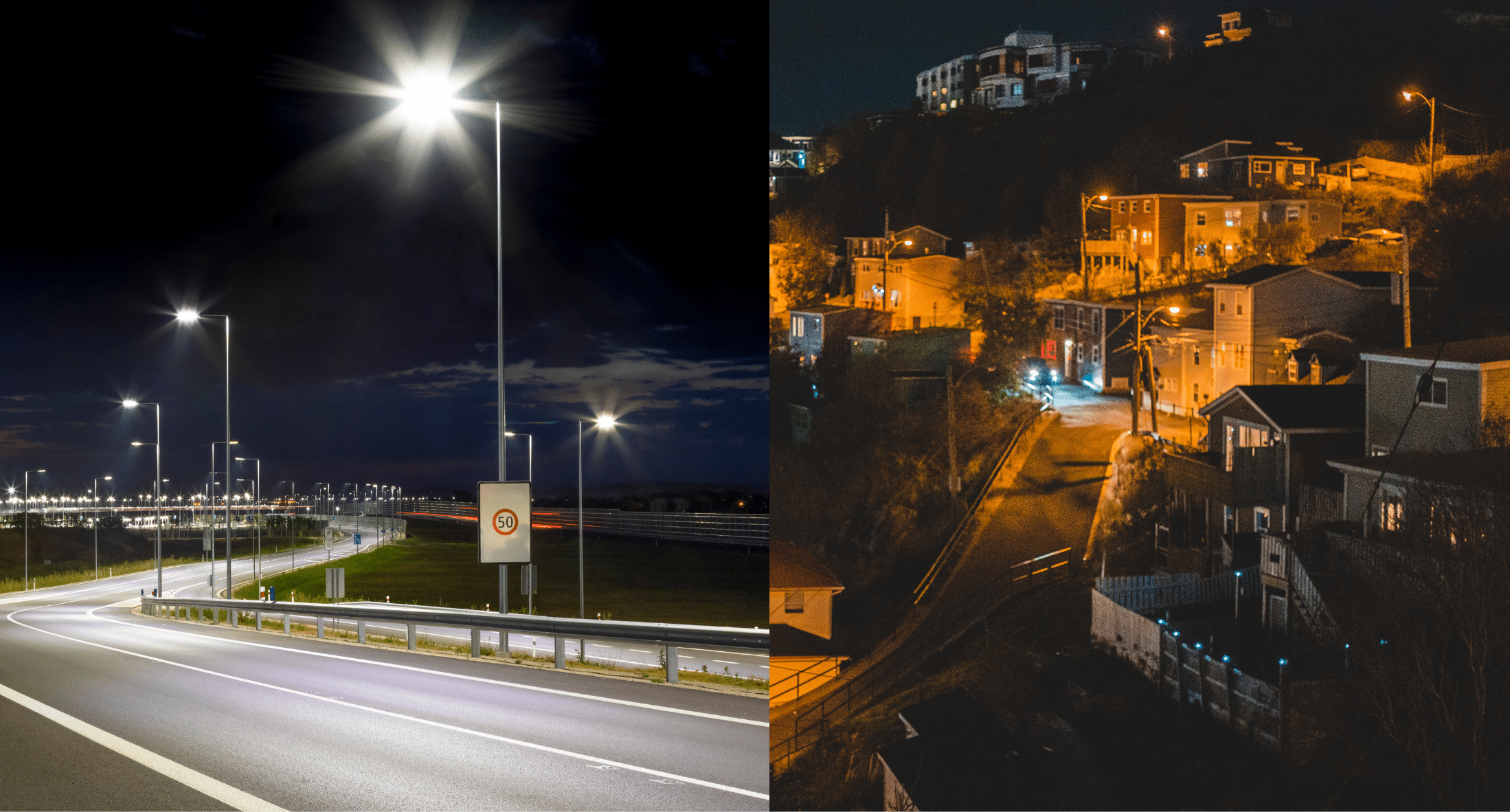
For many of us, LED lights are a newer technology that can be somewhat confusing. Many of us grew up being familiar with incandescent lights and then CFLs (compact fluorescents) became popular around twenty years ago with an easy to understand conversion (15W CFL = 60W incandescent). LED lights, though, are not as simple.
Incandescent bulbs have gone the way of the dinosaur and are not readily available. Both incandescent and fluorescent bulbs use more energy to run and must be replaced frequently. Replacing more frequently increases the need for more resources – both energy and materials. A common myth is that incandescent bulbs were banned but the reality is that the Department of Energy has increased the minimum efficiency requirements and the older technologies could not keep up with these new energy efficiency standards.
LED lights have been around for more than 50 years but in the past 10 to 15 years have increased in popularity mainly because of the low energy consumption and long life of the of the bulbs. Originally, LEDs were only used in a few select applications such as exit lights and only came in red. Today’s LED technology does a much better job of getting the light from the source to the area.
A lumen is the light output from a source and remains constant no matter how near or far from the light source. LEDs which produce light from diodes in a bulb or on a fixture (think little light dots) which gives them their name – light emitting diode. These small light dots allow the light output (lumen) to be focused in a specific direction. LEDs still consume electricity (think Watts), but considerably less than their predecessors.
Their ratio (lumens per Watt) helps you understand their effectiveness (think about the concept of miles per hour). The higher lumens per Watt, the higher the efficiency; most LED products either are higher than or are approaching 100 lumens per Watt. All LEDs have a different lumens per Watt efficacy scale depending on their intended use but we’ll save that for another discussion.
Light bulbs today come with a label that is similar to the nutrition label on food to help give a reference that is understandable. Here’s the measurements of your light bulb:

Low energy use and long life of a bulb are the main benefits people think of when using LED lights but there are many more reasons to make the switch

Even so, there are times when it may not make sense to use LED lights.
Don’t despair – because the LED technology is so widely used today, there are LED fixture designs for almost any application.
One last reminder when upgrading to LED lights:
Now hopefully you can understand why LEDs required a new way of labeling and a new way of thinking about lights.